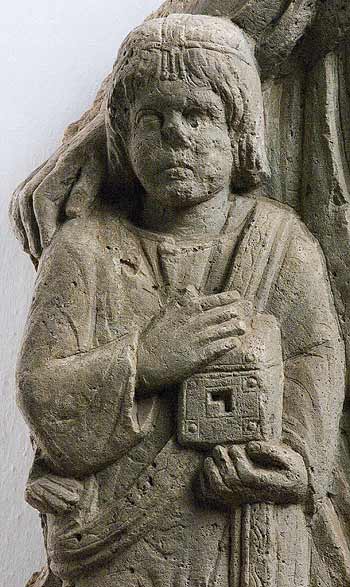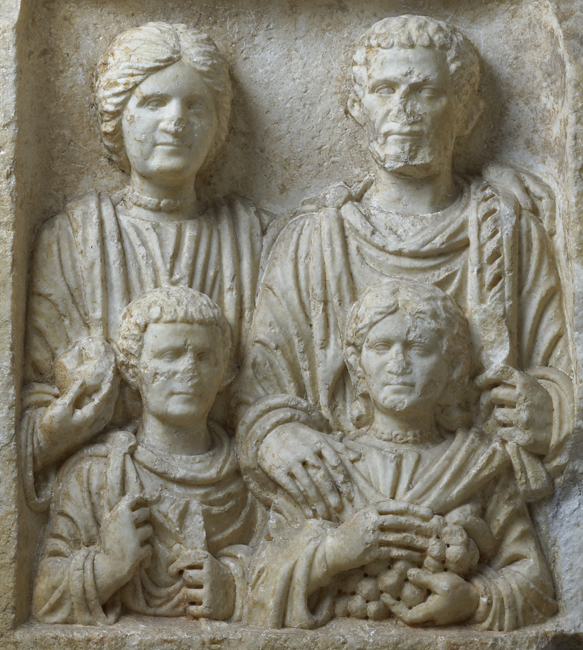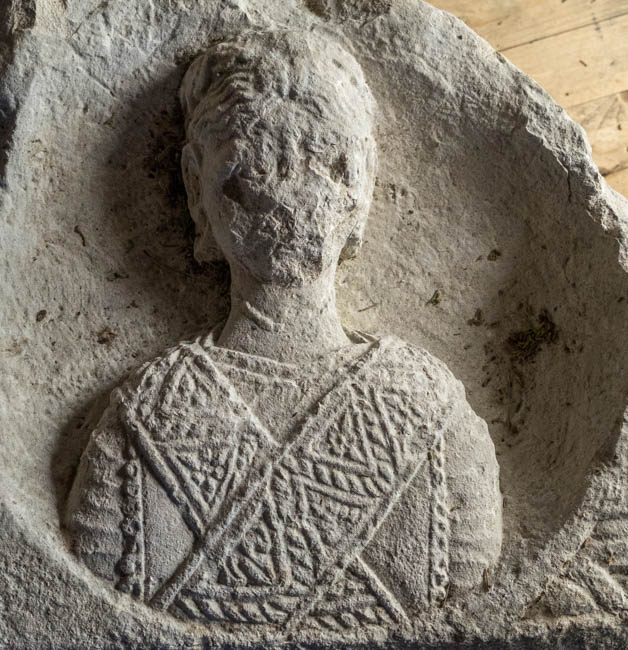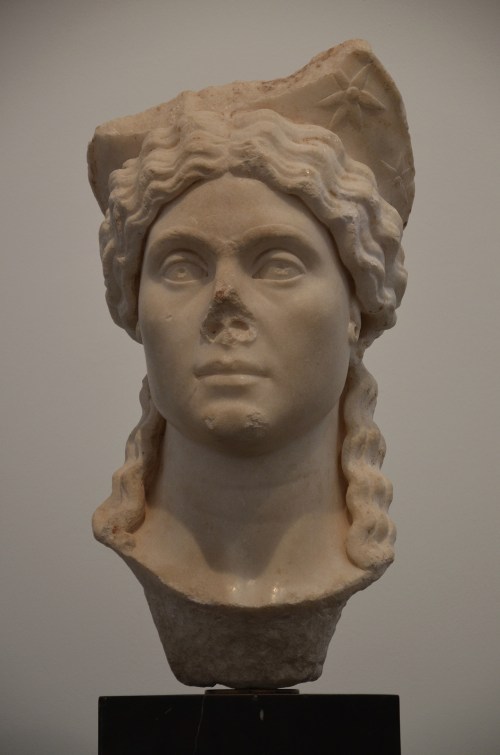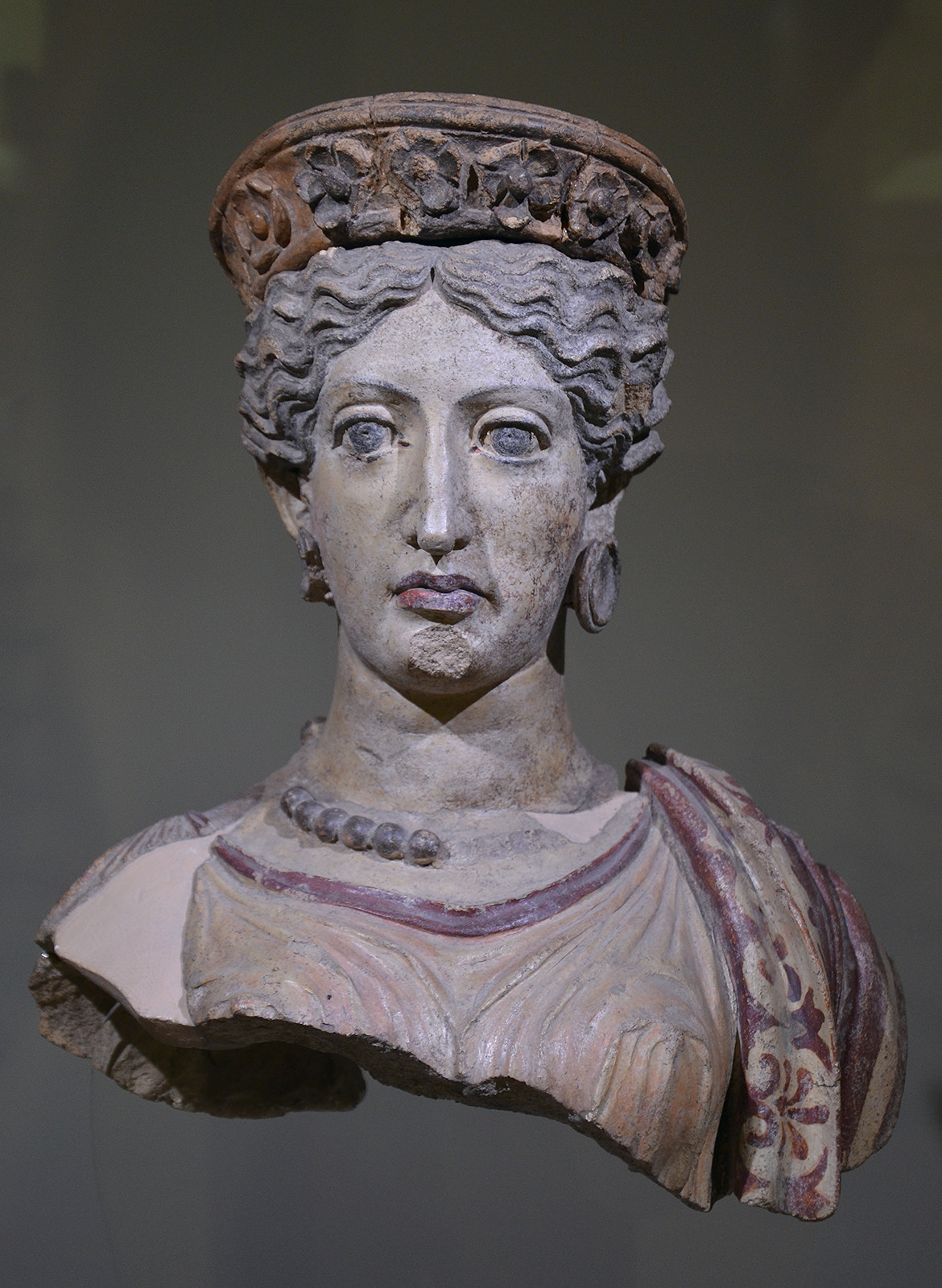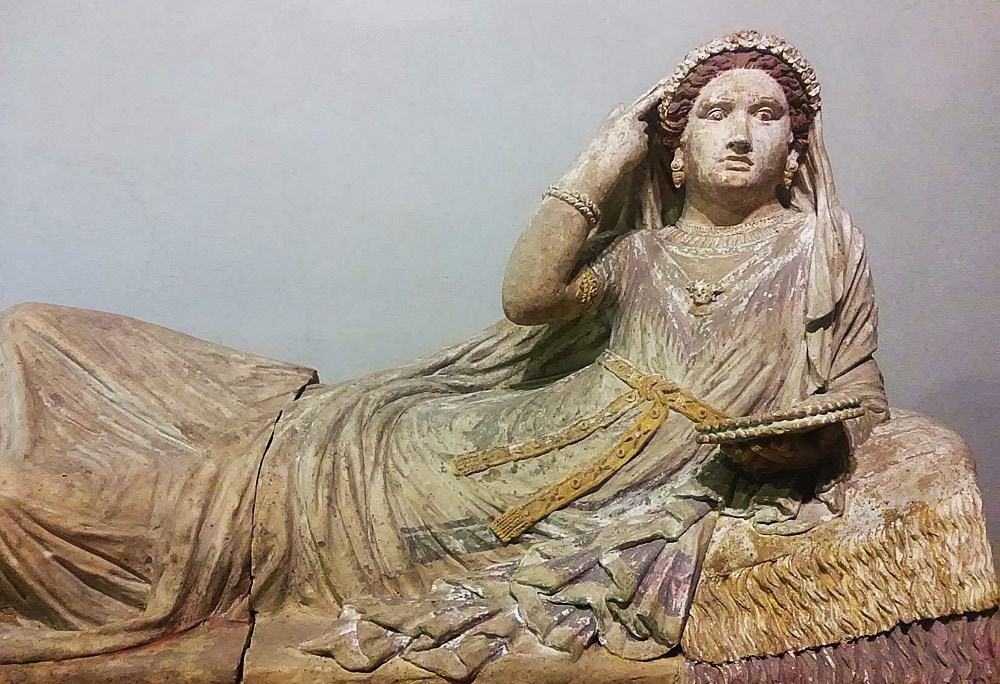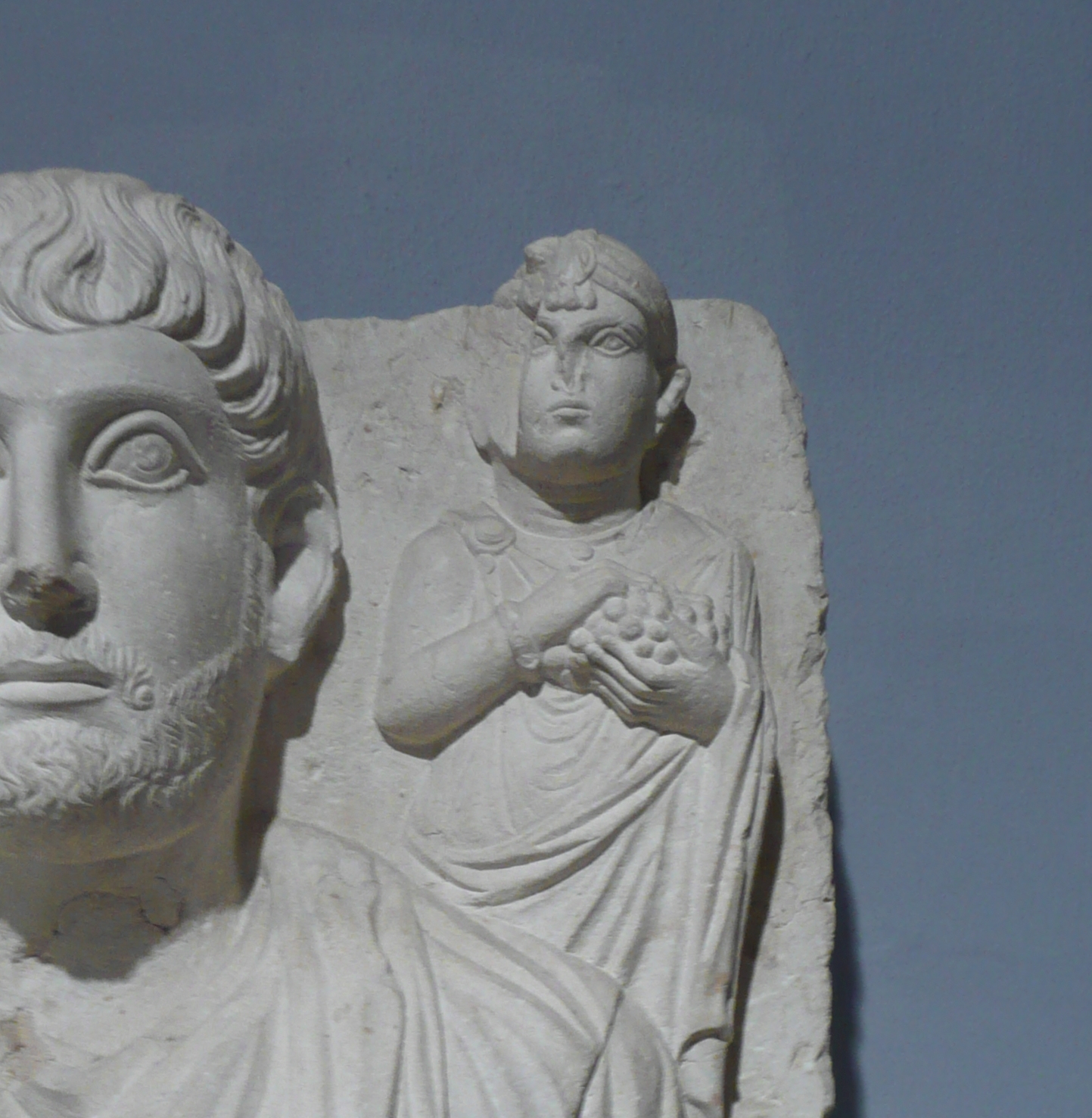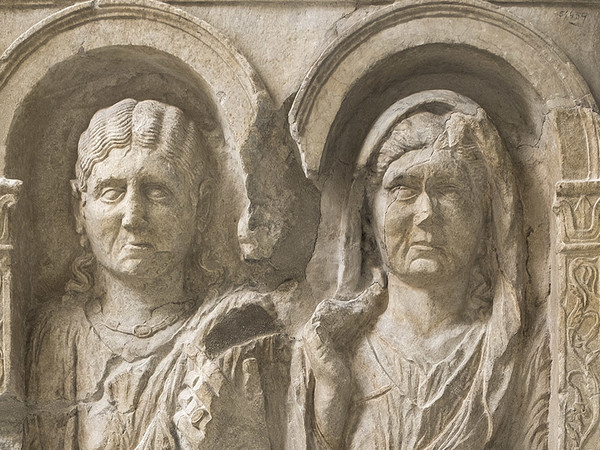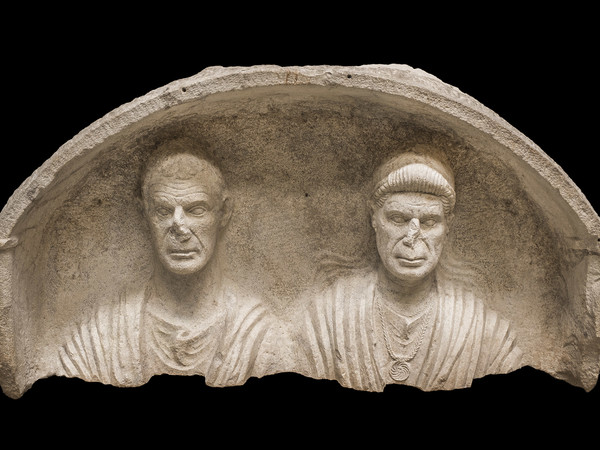
Shield portrait of boy with bulla, formerly Evangelical School. EA 3207
The Lost shield portraits of Aphrodisias. Reflections on Style and Patronage.
A Greek Theme and Its Survivals: The Ruler’s Shield (Tondo Image) in Tomb and Temple
Cornelius C. Vermeule, III
https://www.jstor.org
4th-5th century according to the LSA Database http://laststatues.classics.ox.ac.uk/database/discussion.php?id=975
[Horus lock]
The Lost Shield Portraits of Aphrodisias. Reflections on Style and Patronage
JULIA LENAGHAN
https://www.researchgate.net
“Seventy-seven years before the Atrium House was excavated (1904 vs. 1981-1987), Paul
Gaudin had brought from Aphrodisias at least six shield portraits. Six were certainly stored in
the Evangelical School in Izmir and were lost in the fire of 1922; another re-emerged in 1991
in Bornova, a northern suburb of Izmir
Georg Lippold wrote a succinct but excellent description of the six medallions in the Evangelical School at Izmir.7 He noted that they were from Aphrodisias and late-antique in date.
He presented the date as a fact not deduced from the stylistic qualities of the works but from the details of fashion presented by the portrait of the boy wearing a bulla. This is indisputable (see below).
3. Shield portrait of a boy wearing a bulla in rectangular frame. From Aphrodisias. (FIG. 8)
Bibliography: EA 3207; Squarciapino 1943, 78, pl. Ra; Vermeuele 1965, 374 fig. 26; Winkes
1969, 245c; Sande 1982, 60-63, fig. 3; Goette 1986, 163 no. 5, LSA 605 (Lenaghan); Sande
2015, 39.
W from left edge to middle: c. 25 cm, D of frame: 2.5 cm; Distance of shield rim from lower frame: 2.5 cm.
The frame was preserved in part along the shield around the proper right part of the chest; only a portion of the edge of the frame was preserved at the bottom. The lower portion of shield was preserved from the shoulders downwards. The bust and head were completely preserved. Outside the upper arms, small triangular areas of the background of the shield were preserved. The pupils were indicated.
The portrait shows a boy with a distinctive hairstyle and bulla. The medium length hair is cut around the ears and straight across the brow. The locks over the brow are styled in parallel C curves to turn to the boy’s left. Two long locks of hair fall behind the ears on to the shoulders where they turn back to the neck. The boy’s head turns to his left shoulder. The face is clean shaven with full, unlined cheeks. The neck is traversed by two Venus’ lines.
The bust wears only one garment. It hangs in parallel folds. The folds are U shaped beneath the neckline and appear as straight diagonal lines that radiate from the area of the right shoulder onto the arms and outside of the pectorals. At the centre of the neckline it wears a round bulla with a loop attached to a stiffly circular necklace. There was probably some raised decoration at the centre of the bulla. The bulla is notably popular in representations of the third century and later. In these representations, it is not always worn with the toga, and it hangs on a stiff metallic circlet that differs from the leather cord of earlier representations.
The arms are separated from the body by deep, long, uninterrupted drill channels; this connects it stylistically with the Menander and Pindar busts and also a fragment from the Atrium House (FIGS. 5 and 9). The radiating folds from the area of the right shoulder recall the right shoulder area of the bust of the Bornova shield portrait (7, FIG. 14). The round necklace also recalls vaguely the raised neckline of the chiton of the Bornova philosopher.
The approximate distance from the left edge to the middle is given by Lippold as 25 cm.
Although not visible in the picture, Lippold presumably gave this measure because there was preserved a portion of the original (viewer’s) left edge. This measure clearly connects the shield portrait with the others in the Evangelical School and makes it, the portrait of a boy, 3.5 cm smaller than the smallest complete examples from the Atrium House.
Lippold noted the rim of the shield had a particular sort of platform or moulding, which distinguished it from the others at the Evangelical School. This detail appears and disappears on many of the shields of the Atrium House group. For example, the shield portraits of Alexander, Pindar, and Alcibiades feature it clearly but in the shield portraits of Pythagoras and Apollonios the moulded profile disappears around the top of the bust. A sizeable fragment of a shield rim and the area behind a left shoulder was excavated in 1982 at the Atrium House and does not fit with any of the published shield fragments.27 Although there are fragmentary shield portraits attested and not published, this particular fragment (FIG. 10) is interesting in connection to this lost shield portrait of a boy. It has a width of 26-30 cm depending on the position in which it is held. It has a pronounced lip or ledge where the round shield connects to the background; it has a few centimetres of empty background space on the outside of the shoulder; the long horizontal shape of the break and the engraved line on the background of the fragment which must correspond to some representational detail (shoulder or hair) align well with the break of the lost shield portrait. This entirely hypothetical exercise demonstrates an important possibility that has never been considered and will be discussed below: Could these shield portrait busts lost at the Evangelical School in Izmir have come from the same context as those in the Atrium House?
Of all the shield portraits of the Evangelical School this is perhaps the most important because it is thematically the most particular and because it was used by Lippold as the object that most securely dates the group to the fourth century AD but without discussion. Vermeule’s suggestion that it is a portrait of Constantine is untenable. Sande, both in 1982 and in 2015, has well noted its pertinence to a long tradition of boys involved in religious service.
It is both the hairstyle, the “Camillus-frisur/Camillus coiffure” and the simple sleeved tunic (which is less emphasized by Sande) that are typical for boys in ceremonial religious service. Compelling comparanda are a statue type, known in several Roman marble copies and connected with the Eleusinian Mysteries, and the boys (with a notably cut and curving fringe) who carry the table laden with spoils on the Arch of Titus.30 The frequent appearance of the “Camillus” type in Roman public art in the first to second centuries and the drilled eyes of this portrait led her to date the Evangelical School shield portrait in the Hadrianic period. Yet, she notes also that the tradition, the curving, combed forward, fringe and the shoulder locks combined with the simple tunic continue in representations of boys in the fourth century and later. These late-antique boys – for example one wearing a beautiful chiton and holding the cloak of his master on a mosaic in the frigidarium at Piazza Armerina –, have been discussed by Balty as paedogogiani, finely schooled boys who were testimonies to the nobility and learning of the family in which they served.31 Similar boys appear clearly in the Missorium of Theodosius and the Obelisk of Theodosius in Istanbul, dated securely to ca. AD 400. Particularly the reliefs in marble on the base of the Obelisk are comparable; several young men in the entourage have similar hairstyles, wear round bullae on metallic circlets, and are in thin tunics which have vertical folds. The presence of a bulla significantly indicates that these boys were not necessarily slaves but free-born Romans. Thus, the Evangelical School shield portrait can either be interpreted as a free-born, upper-class child with a traditional religious duty or as a free-born, upper-class child learning and serving in the home of a recognized master. The meanings are in fact not mutually exclusive.”




